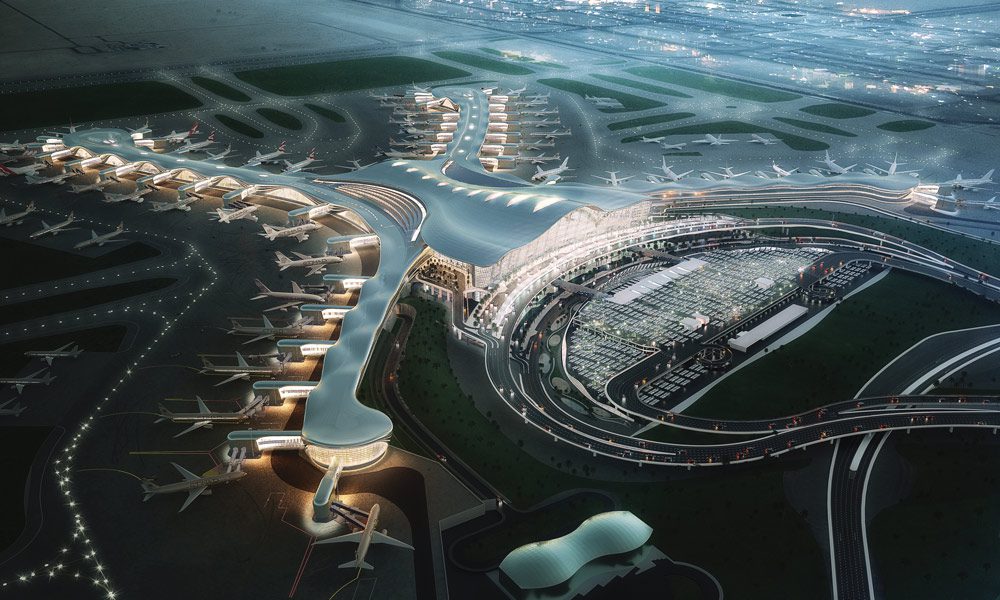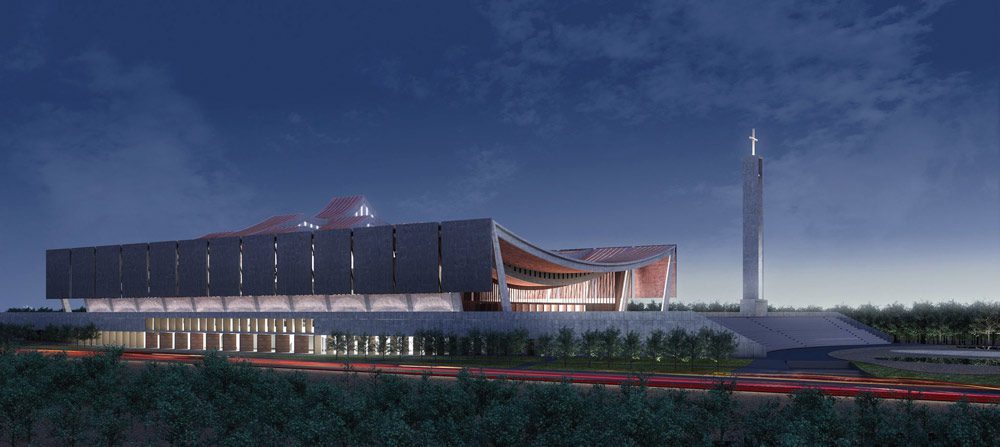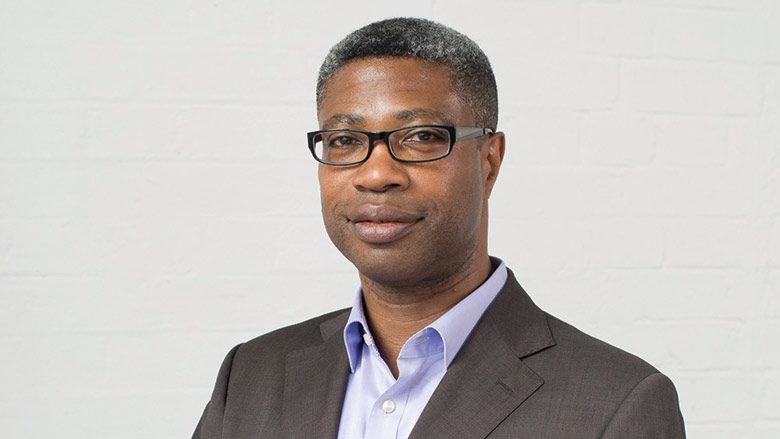By Amy Spooner
Before he really knew what architecture was, Ken Faulkner, B.S. ’91, worked for Albert Kahn Associates. As part of the Detroit Area Pre-College Engineering Program, he interned there the summer after he graduated from high school. Because of the program’s engineering bent, Faulkner worked with Field Services at Kahn construction sites across metro Detroit. What he learned has shaped his career — a career that never ended up including an engineering degree. “What I heard in the trailers, hanging around with the construction crew and the owners’ representatives, was that architects didn’t know how to build. When I ultimately left engineering school in college, one reason I chose architecture was that at least I would know how to build.”
Now Faulkner, based in London, lends his how-to-build expertise to high-profile projects worldwide. In September, he joined Adjaye Associates, led by celebrated Ghanaian-British architect Sir David Adjaye, who was knighted for services to architecture in 2017 and is best known for the Smithsonian National Museum of African American History and Culture. (Adjaye will be a visiting professor at Taubman College during the Winter 2019 semester; learn more on page 8.) At Adjaye Associates, Faulkner is involved in developing the design of the National Cathedral of Ghana in Accra. It is Adjaye’s first major project in Africa, but it is not without controversy. Some tout it as a signal that Ghana has “arrived” on the world architecture scene: Princeton University art history professor Chika Okeke-Agulu wrote in a New York Times op-ed, “This Accra commission is not just a recognition by his homeland of Adjaye’s acclaim. It also signifies that Africa can build a major work by a leading architect at the top of his game.” Others worry about the blurred line between church and state in the funding and use of the cathedral, as well as the diversion of resources that could instead address basic needs like food, shelter, healthcare, and education.

At KPF, Faulkner’s projects included the Abu Dhabi Airport’s Midfield Terminal
Behind the headlines, Faulkner is focused on the nitty-gritty. “David and his team need someone to help make sure that it gets delivered. It is serendipitous when a few conversations lead to something so big,” Faulkner says of the move to Adjaye Associates. “They know I have other skills when delivering projects, like managing an office and helping to keep everything organized, which is where I can add value as David’s practice continues to grow.”
Prior to joining Adjaye, Faulkner most recently spent 14 years as a director at KPF in London — a city he fell in love with as an undergraduate studying abroad at University College London’s Bartlett School of Architecture. “That year, I began to think about design not just as ideas and forms and shapes, but also as structure and services, and how they should be integrated in a design concept — as opposed to a necessary evil to consider afterward,” Faulkner says. “Plus, it was cool to be black in London in 1989 in a way that I didn’t feel in America. In many ways, it was the year that changed my life.”
It also was a time of change in the storied city. Just a few years prior, Richard Rogers’ controversial Lloyd’s building had been completed — a glass and metal structure in the middle of the city’s masonry-rich, historic center. Striking the balance between modernity and tradition has been integral to Faulkner’s work ever since. “You cannot just plop a modern building down without thinking about the context — in London or anywhere,” he says.

At Adjaye Associates, Faulkner will work on the new National Cathedral of Ghana
But London presents additional challenges because of its strict planning codes. One of Faulkner’s early projects as an associate at Foster and Partners in the late 1990s was an office tower that he says paved the way for the Gherkin, a landmark skyscraper that Foster and Partners also designed. “We had to get people’s minds around how to deal with a tall building in the city of London, and we were fortunate that the city had a head of planning who was very forward thinking.” St. Paul’s Cathedral is protected by the London View Management Framework, which sets out the importance of the setting of the cathedral, so Peter Rees, the head of design for the City of London’s planning team from 1985 to 2014, saw land to the northeast of the cathedral — far enough away to avoid view obstruction — as the wave of the future. “His legacy was the Eastern Cluster. He said, ‘If you want to build tall buildings in London, that’s where they should be.’”
At KPF, Faulkner helped to do just that. As a senior associate principal, he also managed the team designing the Midfield Terminal Complex at Abu Dhabi Airport, a nearly $3 billion, 7.5 million-square-foot structure that the United Arab Emirates sees as vital to growing its image as a global gateway. Faulkner led a team of 60 in developing the construction documents — a job that was complicated by the enormity of the project and the nuances of doing business in the Middle East. “It’s been a huge project involving so many people — and it’s going to be fantastic when it’s done,” he says. Completion is scheduled for 2020.
Whether working on an office tower in London, airport in Abu Dhabi, or cathedral in Accra, Faulkner says that the focus learned in those early days in the site trailers drives his work. “Lots of people have good design ideas, but where some of these buildings fall down is in the execution. If you don’t know how to detail a building, and if you don’t know how to build, you can have the greatest idea in the world, but it doesn’t work. It’s more than making sure the roof doesn’t leak; it’s doing a beautiful detail and resolving things down to the smallest part. That’s where I come in.”





